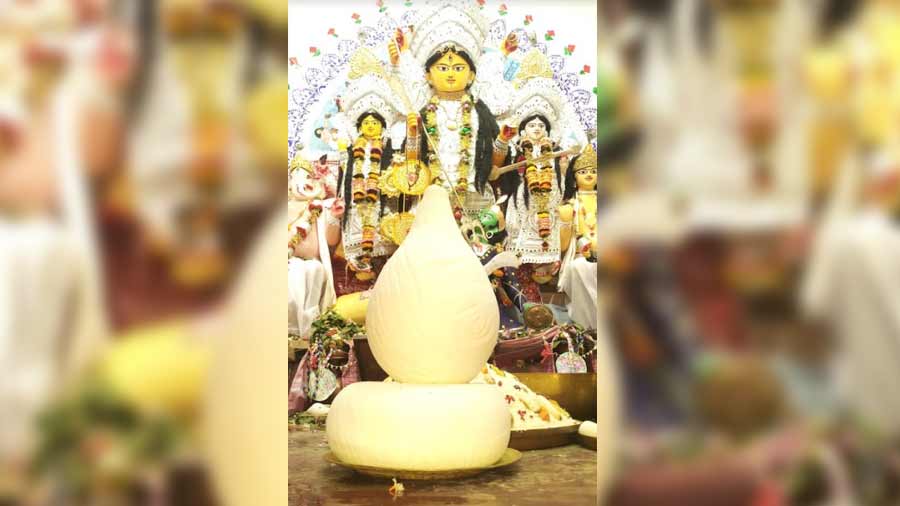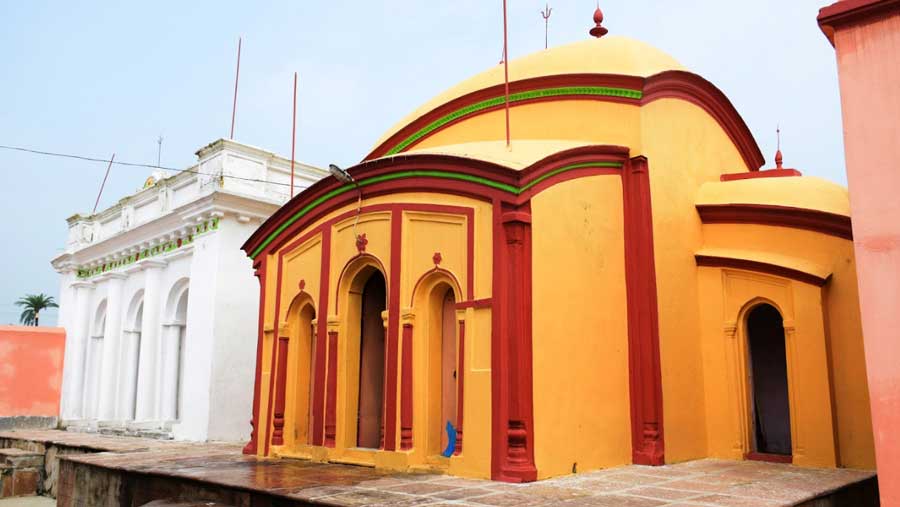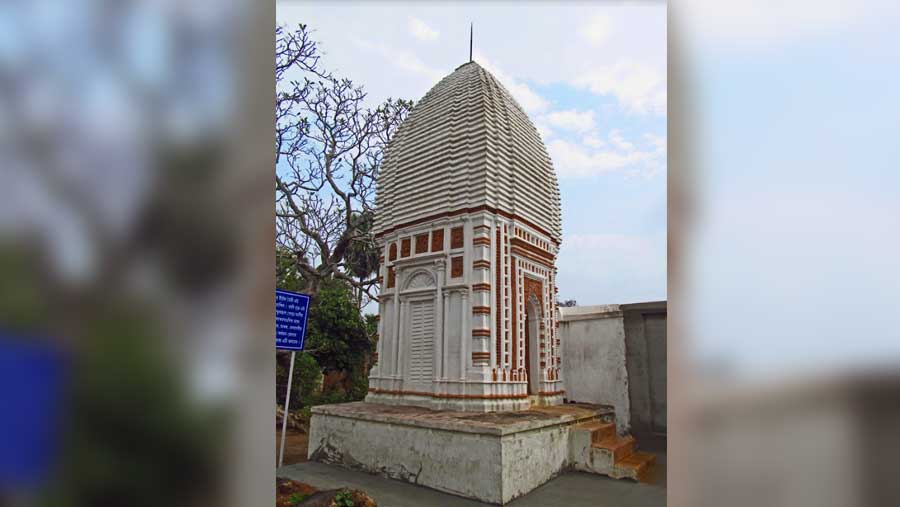
With the state of affairs slowly inching in the direction of regular, the lure of a day journey to get a glimpse of Bengal’s heritage is a tempting provide. Take a time off to drive to the historic village of Mankar in Purba Bardhaman (East Burdwan) district to find the story of the once-burgeoning city that also has vestiges of artwork, structure and household legacies peppered via it.
The beginnings
What’s a small rural hamlet right this moment, was dwelling to shut to 1,500 households to start with of the Nineteenth century. Virtually half of them had been households of weavers who would create the as soon as well-known tussar silk of Mankar. The artisans used to additionally weave kutuni, just like a double jersey material with silk on one facet and cotton on the opposite. They had been additionally identified to weave fishing strains.
One in every of Mankar’s most celebrated households was that of Bhaktalal Goswami, who was Burdwan Maharaja Kirti Chand Rai’s (1702-1740) guru. Owing to his place, the household got tax-free land within the area and have become the realm’s important landlords. Their presence additionally introduced many realized males and educated Brahmins to Mankar.

Mankar’s large ‘kodma’ sweets are taken to different cities and cities as choices throughout Kali Puja and Durga Puja
Souvik Mondal
Right now, Mankar is well-known for making giant-sized kodma (or kadma). The quintessential and usually-small Bengali sweets are served throughout virtually each puja and made solely of sugar. The large kodma made right here is taken to many different cities and cities as choices throughout Kali and Durga Puja.
Household legacies

Aatchala Anandamoyee Kalibari
Amitabha Gupta
One in every of Mankar’s most well-known spots is the Aatchala Anandamoyee Kalibari. The temple’s goddess is the household deity of the erstwhile Kabiraj household. Their title might be linked to the truth that the household’s ancestors had been identified to be Ayurvedic healers to the area’s royalty.
Close to the well-maintained temple lies the colossal however age-worn mansion of the Kabiraj household. The home additionally has a thakur dalan or Durga dalan, an inside courtyard the place a home’s Durga Puja was historically held, and the household nonetheless celebrates the competition right here yearly. The house additionally appeared in a number of sequences of Mrinal Sen’s Baishe Srabon, and based on descendant Surajit Gupta, has obtained vital friends via historical past, together with Lord Clive and Vidyasagar.

The Durga ‘dalan’ of the Biswas household mansion
Amitabha Gupta
In distinction to the Kabiraj resident, the house of the Biswas household in Biswaspara has been restored and its grand two-storied Durga dalan sports activities a recent coat of paint. The household’s Durga Puja at Mankar is 300 years outdated, began from the time they had been moved right here by patriarch Nilmadhab Biswas. It was in Nilmadhab’s grandson Mahesh Biswas’ time that the household noticed an increase in fortune, and it was Mahesh who constructed the 2 Deul temples and the mansion with the Durga dalan.
Temple city

Kashinath temple
Amitabha Gupta
There have been round 42 brick temples in-built Mankar from the mid-18th to late-Nineteenth centuries. Near the Biswas mansion are two temples that function beautiful terracotta work on their partitions. The primary, is the native Pramatha Nath Dutta household’s five-pinnacled Kashinath temple constructed within the mid-Nineteenth century. Sadly, time has worn away the work on the central arch of the temple’s facade, however there are scenes from Krishna Leela, and collectible figurines of Shiva etched on the best and left panels.

Banerjee para Deul temple
Amitabha Gupta
About 250 metres away is the Deuleswar temple, which has comparable terracotta facades however components of it are actually lined in whitewash as a part of a restoration. Different buildings with comparable artwork are the Banerjee para Deul temple and the Morol para Pancharatna temple. A number of ivy and moss-covered deserted brick temples are scattered everywhere in the village.
One such spoil is domestically generally known as the Rang Mahal. Constructed in the course of the time of Bhaktalal Goswami, this was as soon as the sprawling Radhaballabh temple complicated. At current, untamed vegetation covers the realm and the principle pinnacle of the temple, which has some wonderful stucco work, together with a pair of small octagonal temples are the one buildings nonetheless standing. Images from the Nineteen Seventies, taken by well-known Indologist David McCutchion offers an concept of its glory days.

The stucco work on the principle temple of Rang Mahal
Amitabha Gupta
Although Mankar is related by rail, one of the best ways to get there’s by street via Durgapur Expressway. It’s a distance of about 147km and takes about three hours. Drive by way of Dankuni, Singur and Saktigarh, bypassing Burdwan and get off the freeway onto a service street at Budbud. A proper from right here, and a drive of two.6 km will deliver you to Mankar station.
Locations to discover near Mankar embrace Amrargar (10-min drive) and Bhalki Machan (20-min drive). Amrargar was the capital of Sadgop king Mahendranath and has a well-maintained temple complicated. Bhalki additionally has a number of temples together with its well-known machan, believed to be a Nice Trigonometrical Survey (GTS) Tower.
If you’re in Mankar simply earlier than Durga Puja, you might even see supersized kodma sweets being made right here. There usually are not many choices for meals within the village, however there are many eateries alongside the freeway.